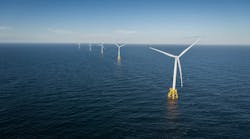DOE released the results of an exploratory study investigating energy losses in Ethernet cables used between power over Ethernet (PoE) switches and luminaires in PoE connected lighting systems. The key finding is that the guidance offered in ANSI C137.3-2017 does appear to be effective in limiting cable energy losses to 5% in PoE lighting applications, provided that the average cable length on a project does not exceed 50 m. The study is the first in a planned series of investigations into the energy efficiency of PoE and other connected lighting systems.
For this study, testing was conducted at DOE’s Connected Lighting Test Bed in September 2017. A test setup comprising a PoE switch, a set of luminaires, and a reference meter was used to test nine cable models of varying design. Power measurements for two widely differing cable lengths — one near 50 m and another near 0 m — were used to determine the portion of PoE switch output power dissipated by each cable model. The results were analyzed to explore the impact of cable selection on PoE lighting system energy efficiency, as well as the effectiveness of guidelines recently introduced by the American National Standards Institute (ANSI) C137 Lighting Systems Committee.
Among the recommendations offered to help streamline the adoption of PoE technology in lighting applications, the report’s authors said system designers should specify that wires meet ANSI C137.3 guidance, or specify minimum wire gauge directly if even lower losses are desired; should seek products independently certified as compliant with IEEE’s 802.3 standard; and cable manufacturers should publish lists of compatible cabling products or parameters relevant to compatibility in product documentation.









